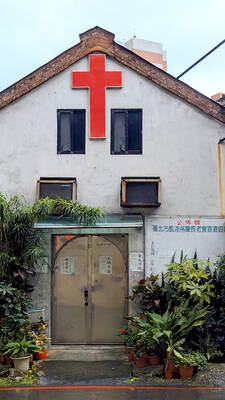It is the legend that drew legions of explorers and adventurers to their deaths: an ancient empire of citadels and treasure hidden deep in the Amazon jungle.
Spanish conquistadors ventured into the rainforest seeking fortune, followed over the centuries by others convinced they would find a lost civilization to rival the Aztecs and Incas.
Some seekers called it El Dorado, others the City of Z. But the jungle swallowed them and nothing was found, prompting the rest of the world to call it a myth. The Amazon was too inhospitable, said 20th century scholars, to permit large human settlements.
Now, however, the doomed dreamers have been proved right: there was a great civilization. New satellite imagery and flyovers have revealed more than 200 huge geometric earthworks carved in the upper Amazon basin near Brazil’s border with Bolivia.
Spanning 250km, the circles, squares and other geometric shapes form a network of avenues, ditches and enclosures built long before Christopher Columbus set foot in the new world. Some date to as early as AD 200, others to 1283.
Scientists who have mapped the earthworks believe there may be another 2,000 structures beneath the jungle canopy, vestiges of vanished societies.
The structures, many of which have been revealed by the clearance of forest for agriculture, point to a “sophisticated pre-Columbian monument-building society,” says the journal Antiquity, which has published the research.
The article adds: “This hitherto unknown people constructed earthworks of precise geometric plan connected by straight orthogonal roads. The ‘geoglyph culture’ stretches over a region more than 250km across, and exploits both the floodplains and the uplands ... we have so far seen no more than a tenth of it.”
The structures were created by a network of trenches about 11m wide and several feet deep, lined by banks up to a meter high. Some were ringed by low mounds containing ceramics, charcoal and stone tools. It is thought they were used for fortifications, homes and ceremonies, and could have maintained a population of 60,000 — more people than in many medieval European cities.
The discoveries have demolished ideas that soils in the upper Amazon were too poor to support extensive agriculture, says Denise Schaan, a co-author of the study and anthropologist at the Federal University of Para, in Belem, Brazil. She told National Geographic: “We found this picture is wrong. And there is a lot more to discover in these places, it’s never-ending. Every week we find new structures.”
Many of the mounds were symmetrical and slanted to the north, prompting theories that they had astronomical significance.
Researchers were especially surprised that earthworks in floodplains and uplands were of a similar style, suggesting they were all built by the same culture.
“In Amazonian archaeology you always have this idea that you find different peoples in different ecosystems,” said Schaan. “So it was odd to have a culture that would take advantage of different ecosystems and expand over such a large region.”
The first geometric shapes were spotted in 1999 but it is only now, as satellite imagery and felling reveal sites, that the scale of the settlements is becoming clear. Some anthropologists say the feat, requiring sophisticated engineering, canals and roads, rivals Egypt’s pyramids.
The findings follow separate discoveries further south, in the Xingu region, of interconnected villages known as “garden cities.” Dating between 800 and 1600, they included houses, moats and palisades.
“These revelations are exploding our perceptions of what the Americas really looked liked before the arrival of Christopher Columbus,” said David Grann, author of The Lost City of Z, a book about an attempt in the 1920s to find signs of Amazonian civilizations. “The discoveries are challenging long-held assumptions about the Amazon as a Hobbesian place where only small primitive tribes could ever have existed, and about the limits the environment placed on the rise of early civilizations.”
They are also vindicating, said Grann, Percy Fawcett, the Briton who led the expedition to find the City of Z. Fawcett’s party vanished, bequeathing a mystery and partly inspiring Conan Doyle’s book The Lost World.
Many scientists saw the jungle as too harsh to sustain anything but small nomadic tribes. Now it seems the conquistadors who spoke of “cities that glistened in white” were telling the truth. They, however, probably also introduced the diseases that wiped out the native people, leaving the jungle to claim — and hide — all trace of their civilization.

The Directorate-General of Budget, Accounting and Statistics (DGBAS) told legislators last week that because the Chinese Nationalist Party (KMT) and Taiwan People’s Party (TPP) are continuing to block next year’s budget from passing, the nation could lose 1.5 percent of its GDP growth next year. According to the DGBAS report, officials presented to the legislature, the 2026 budget proposal includes NT$299.2 billion in funding for new projects and funding increases for various government functions. This funding only becomes available when the legislature approves it. The DGBAS estimates that every NT$10 billion in government money not spent shaves 0.05 percent off

Dec. 29 to Jan. 4 Like the Taoist Baode Temple (保德宮) featured in last week’s column, there’s little at first glance to suggest that Taipei’s Independence Presbyterian Church in Xinbeitou (自立長老會新北投教會) has Indigenous roots. One hint is a small sign on the facade reading “Ketagalan Presbyterian Mission Association” — Ketagalan being an collective term for the Pingpu (plains Indigenous) groups who once inhabited much of northern Taiwan. Inside, a display on the back wall introduces the congregation’s founder Pan Shui-tu (潘水土), a member of the Pingpu settlement of Kipatauw, and provides information about the Ketagalan and their early involvement with Christianity. Most

The People’s Republic of China (PRC) was out in force in the Taiwan Strait this week, threatening Taiwan with live-fire exercises, aircraft incursions and tedious claims to ownership. The reaction to the PRC’s blockade and decapitation strike exercises offer numerous lessons, if only we are willing to be taught. Reading the commentary on PRC behavior is like reading Bible interpretation across a range of Christian denominations: the text is recast to mean what the interpreter wants it to mean. Many PRC believers contended that the drills, obviously scheduled in advance, were aimed at the recent arms offer to Taiwan by the

It is a soulful folk song, filled with feeling and history: A love-stricken young man tells God about his hopes and dreams of happiness. Generations of Uighurs, the Turkic ethnic minority in China’s Xinjiang region, have played it at parties and weddings. But today, if they download it, play it or share it online, they risk ending up in prison. Besh pede, a popular Uighur folk ballad, is among dozens of Uighur-language songs that have been deemed “problematic” by Xinjiang authorities, according to a recording of a meeting held by police and other local officials in the historic city of Kashgar in